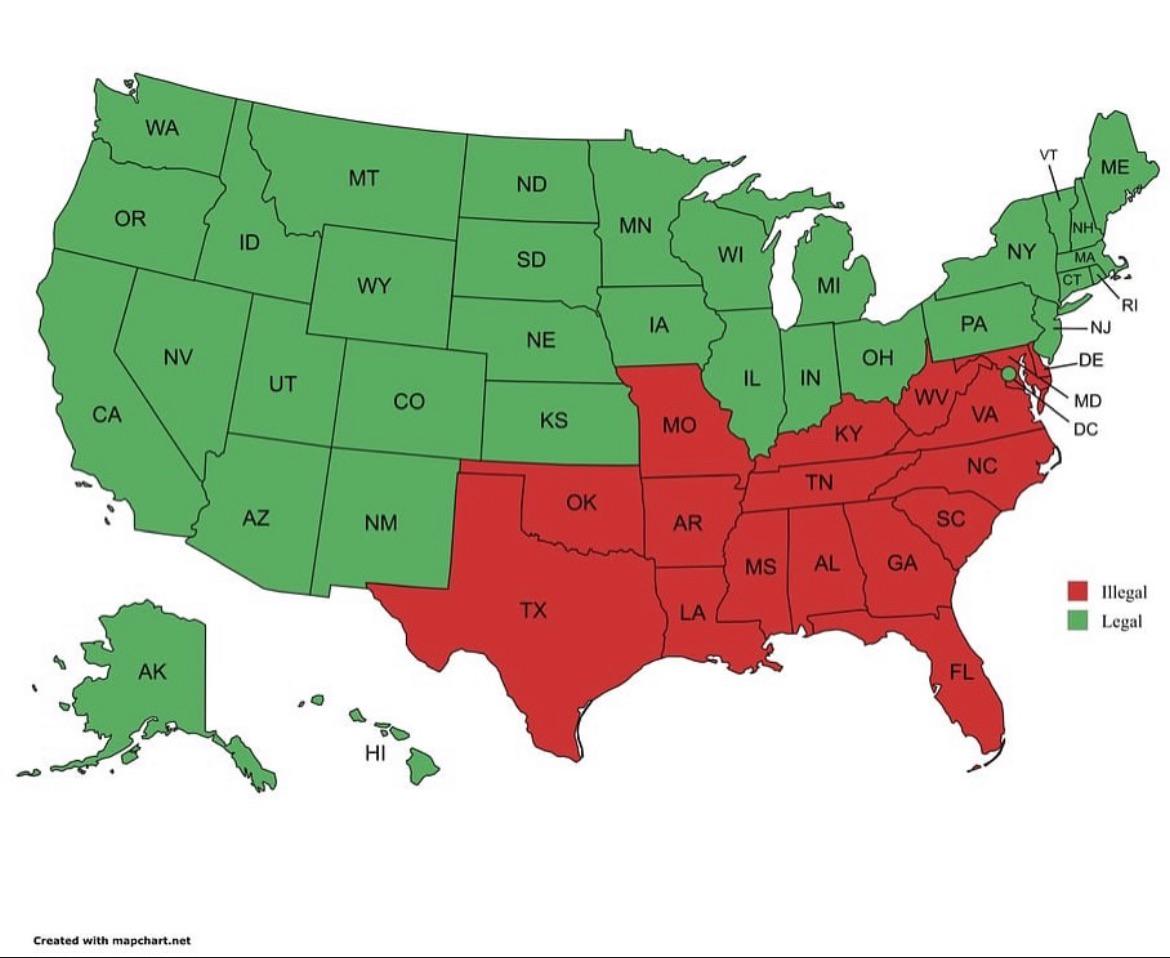Legality of Interracial Marriage in the U.S. Map


Alex Cartwright
Senior Cartographer & GIS Specialist
Alex Cartwright is a renowned cartographer and geographic information systems specialist with over 15 years of experience in spatial analysis and data...
Geographic Analysis
What This Map Shows
This map illustrates the legal status of interracial marriage across the United States in 1966. At a glance, it reveals which states had laws prohibiting interracial marriage, as well as those that had legalized it. The stark contrast in colors highlights the deep social and legal divisions in America during a time when civil rights were a pivotal issue. This visualization serves as a snapshot of a crucial moment in U.S. history, allowing us to better understand the landscape of racial relations and marriage laws.
Deep Dive into Interracial Marriage Laws
Interracial marriage has long been a contentious topic in American society, steeped in racial prejudice and cultural attitudes. The legal history of interracial marriage in the U.S. can be traced back to colonial times, but it wasn't until the mid-20th century that significant changes began to take shape. In 1966, many states still had laws on the books prohibiting marriages between individuals of different races. These laws were remnants of a system that aimed to maintain racial segregation and uphold white supremacy.
Interestingly, the U.S. Supreme Court's landmark decision in Loving v. Virginia, which took place just a year later in 1967, would ultimately declare such laws unconstitutional. Until then, states like Virginia, Alabama, and Mississippi enforced strict anti-miscegenation laws, which criminalized interracial marriages and often led to severe social repercussions for those who defied them.
In terms of statistics, by 1966, only a handful of states had fully legalized interracial marriage. These included places like New Mexico and Hawaii, which had relatively more progressive stances on racial integration compared to their counterparts. However, the majority of the South and parts of the Midwest were still deeply entrenched in discriminatory practices. This map not only showcases the legal framework but also reflects the sentiments of the time—where societal norms were often at odds with the emerging civil rights movement.
The restrictions on interracial marriage were not just legal barriers; they symbolized a broader societal rejection of racial equality. Public opinion during this period was largely influenced by prevailing stereotypes and fears about race mixing, which many believed threatened the social order. This fear was often perpetuated through media, education, and political rhetoric, reinforcing the idea that interracial unions were taboo.
Regional Analysis
Delving into the regional differences depicted on the map, we can observe a clear divide between states in the North and those in the South. Southern states, particularly, were notorious for their stringent anti-miscegenation laws. For instance, states like Arkansas and Louisiana had some of the harshest penalties for interracial couples, reflecting the deep-seated racism prevalent in these areas at the time.
Conversely, states in the Northeast and West Coast began to show a gradual shift towards acceptance. California, for example, had already begun to attract diverse populations, and by 1966, attitudes were shifting. The legal landscape was changing, albeit slowly, with states like New York and New Jersey leading the way in dismantling discriminatory laws.
Interestingly, the Midwest showed a mixed picture; while some states like Illinois were moving towards legalization, others maintained restrictive laws. This regional variation underscores the complex tapestry of American society in the 1960s, where local culture and history played significant roles in shaping laws and attitudes.
Significance and Impact
The legality of interracial marriage in 1966 is a crucial chapter in the broader narrative of civil rights in the United States. Understanding this topic is essential not only for grasping the history of race relations but also for recognizing the ongoing struggles for equality. The map serves as a reminder of how far the country has come, but it also highlights the work that remains to be done.
Today, interracial marriage is increasingly common and widely accepted, but the historical context is vital. Have you noticed that while legal barriers have been removed, social challenges still persist? The conversations around race, identity, and marriage continue to evolve, reflecting the complexities of a multicultural society.
As we look to the future, it’s essential to remember that the fight for equality and acceptance is ongoing. The progress made since 1966 is commendable, yet current trends indicate that discussions about race, identity, and marriage will remain relevant in shaping the fabric of American society for years to come. The map of interracial marriage legality in 1966 is not merely a historical artifact; it’s a testament to the resilience of those who fought for love and equality in the face of adversity.
Visualization Details
- Published
- August 14, 2025
- Views
- 112
Comments
Loading comments...